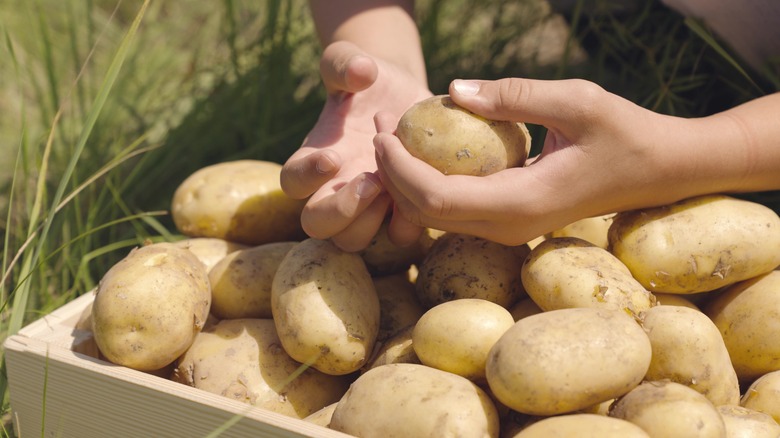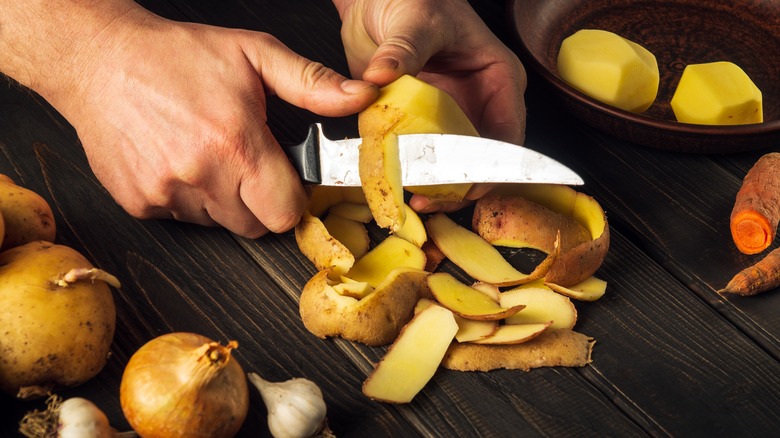What To Do With Leftover Potato Peels
What's not to love about potatoes? They're the primary vegetable crop in the U.S. and the fourth most important global food crop, according to the Agricultural Marketing Resource Center. They've been around since about 200 B.C., once serving curious roles of time keeping and bone healing in Peru's Inca Indian populations. The lack of them led directly to the Irish Potato Famine of the mid-to-late 1800s, per Britannica, which notes that rural laborers in Ireland depended on potatoes for at least 80% of daily calories.
Potatoes rarely carry such significance in modern society, although WebMD reports that in 2017 alone, Americans ate a staggering 49.2 pounds of potatoes per person. It's a good thing they're also nutritious, fat-free, and infuse no cholesterol into your body. They also harbor healthy doses of fiber, antioxidants, potassium, and high percentages of daily needs for vitamins C and B6.
Getting that goodness into your meals is easy, from baked, mashed, and boiled potatoes to French fries, hash browns, poutine concoctions, potato soufflés, and even a heart-healthy potato Niçoise salad recipe from the Idaho Potato Commission. But there's one overlooked part of the potato that deserves a shout-out — the outer skin. After trimming it away, you're left with a mound of slivered potato peels destined for the bin. Here are some alternatives for what to do with those leftover potato peels.
Potato peels are nutritious and delicious
As the U.S. state producing the most potatoes, per Statista, Idaho holds some sway in potato pertinence. So when the Idaho Potato Commission says you should be eating potato peels, it's worth noting. The Commission states that the skins of russet potatoes contain an even higher amount of nutrients than the potato flesh, with roughly half the overall fiber of a medium potato nestled within the skin.
Many restaurant menus feature potato skins as appetizers, which typically come laden with cheese, bacon, scallions, and sour cream. The New York Times provides a recipe that calls for rubbing the skin of a whole potato with olive oil before baking, to make it crispy, and then quartering into slices, scooping out all but 1/4 inch of potato insides, and adding toppings.
Other ways of enjoying potato skins bypass the added calories. In a cooking class on creative uses for food scraps, a Cook Well Berkely recipe goes super simple, recommending just three ingredients for roasted potato peels: potato peels, olive oil, and salt. Toss peels in the oil and salt, spread across a flat baking sheet, and bake at 400 degrees Fahrenheit for 10 to 15 minutes. Other seasonings and toppings are optional. A similar Weight Watchers recipe adds chopped rosemary and finely grated lemon zest to the mix and recommends turning the peels halfway through the cooking process.

